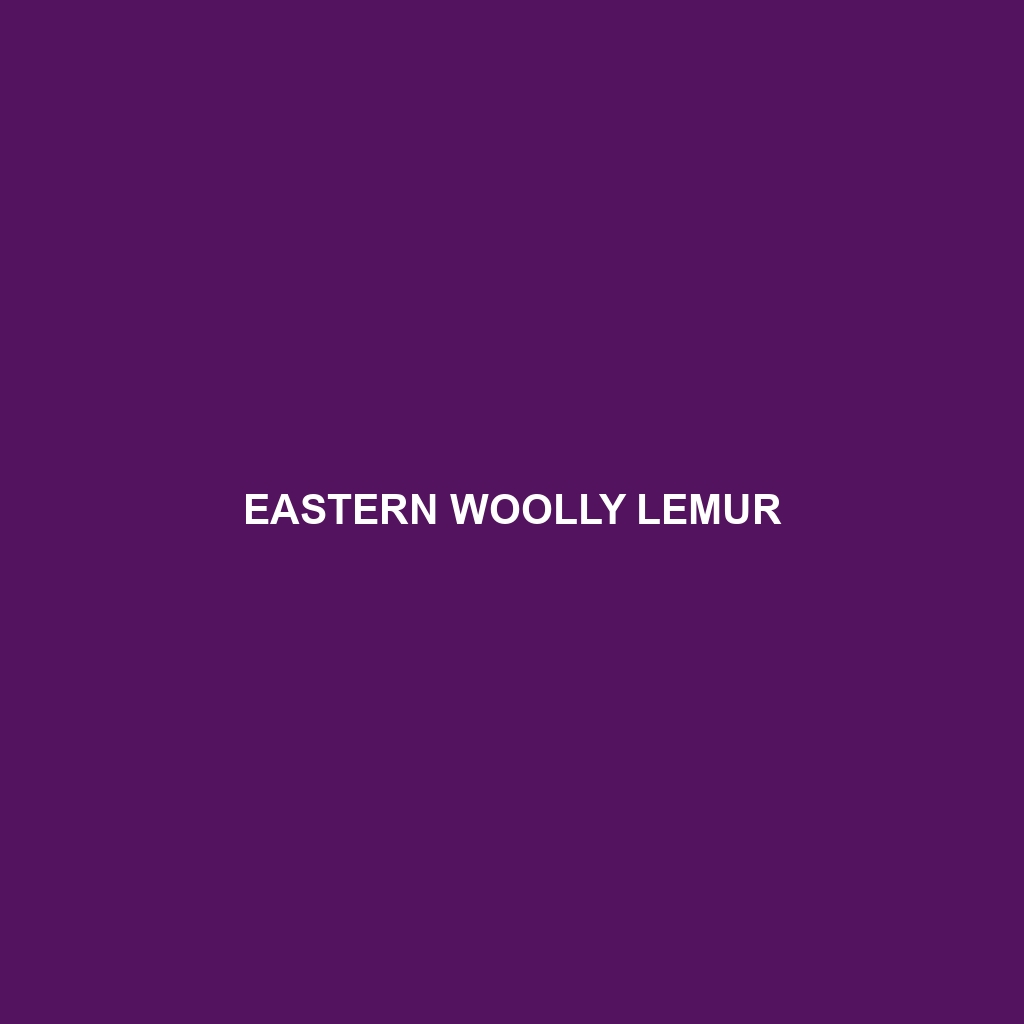Eastern Woolly Lemur: A Comprehensive Species Description
Common Name: Eastern Woolly Lemur
Scientific Name: Avahi lanigera
Habitat
Eastern Woolly Lemur is primarily found in the lush rainforests of Madagascar. This nocturnal species prefers the dense, humid environments of eastern Madagascar, specifically in areas with an abundance of bamboo and tall trees. They inhabit both primary and secondary forests, showcasing their adaptability to various forest types. Conservation efforts are critical in these regions due to habitat destruction from agriculture and logging.
Physical Characteristics
The Eastern Woolly Lemur is characterized by its medium size, typically weighing between 3 to 4.5 kg (6.6 to 9.9 lbs). Their fur is dense, grey or brown, with a distinctive woolly texture. The face features striking large eyes adapted for night vision, while their long tails are utilized for balance as they move through the trees. Their large, rounded ears are also a distinctive feature, enhancing their acute hearing in the dense forest environment.
Behavior
Eastern Woolly Lemurs are predominantly nocturnal, making them more active during the night. They exhibit a unique social structure, often forming small family groups. These lemurs are known for their vocalization, communicating through a variety of sounds, including calls that can be heard over long distances. Their arboreal lifestyle leads them to be excellent climbers and jumpers, providing agility in their forest home.
Diet
The diet of the Eastern Woolly Lemur mainly consists of leaves, fruits, and flowers, with a particular preference for fibrous plant materials. They are folivorous, which means they primarily feed on leaves, allowing them to thrive in their forest habitat. To meet their nutritional needs, they rely on specific trees, utilizing their strong teeth to chew through tough foliage.
Reproduction
Eastern Woolly Lemurs typically breed once a year, with the breeding season occurring around late September to early November. Following a gestation period of about 4 to 5 months, females usually give birth to a single offspring. Notably, mothers exhibit strong maternal instincts, carrying the young clinging to their belly for the first few months of life.
Conservation Status
Currently, the Eastern Woolly Lemur is classified as Endangered on the IUCN Red List, facing threats from habitat loss due to deforestation and human encroachment. Conservation initiatives are essential to protect their remaining habitat and ensure their survival.
Interesting Facts
– The Eastern Woolly Lemur has the unique ability to rotate its wrist, which aids in climbing.
– They are one of the few lemur species that demonstrate seasonal breeding patterns, aligning with the availability of food resources.
Role in Ecosystem
As a crucial part of their forest ecosystem, Eastern Woolly Lemurs contribute to seed dispersal, facilitating forest regeneration. Their feeding habits help maintain the balance of plant life in their habitat. Additionally, as prey for larger predators, they play an integral role in the food web of Madagascar’s diverse ecosystems.
